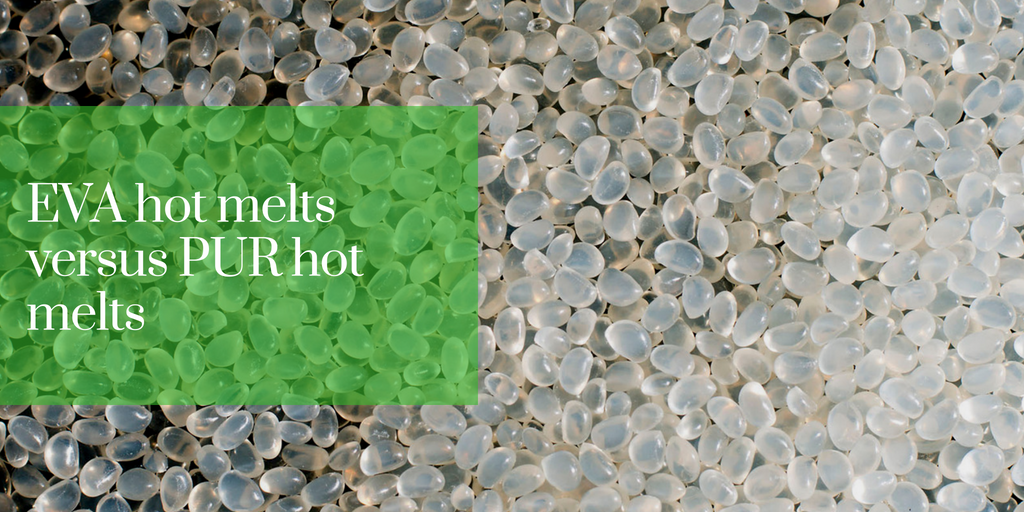So what is the difference between EVA hot melts and PUR hot melts anyway? In the simplest form, EVA’s can be used in open application dispensing systems while PUR’s require closed systems. Both do a great job in an adhering various substrates but use different routes in regards to how they can be applied.
EVA Hot Melt
You’ve likely seen an EVA glue (Ethyl Vinyl Acetate). It's outgoing, an extrovert - it likes to be seen in all its forms: glue sticks, beads, pearls, chips, chicklets, slats, squares, pillows, slugs, chubs, yellow, white, colorless, opaque, translucent, small cartons, medium sized bags, large gaylord containers. You get to look at it, feel it, smell it (if you want), select it out of a catalog: do you want short open time, long open time, more tack, less tack, high heat resistance, high performance, general purpose, more porous substrates, more difficult material, 250F, 275F, 300F, 325F, 350F?
It forms a bond by hot tack and completes the bond as it cools down to ambient temperature. It is a hot melt that meets a wide range of bonding application demands such as graphic arts, packaging, and general assembly work.
PUR Hot Melt
I don’t think you’ve seen a PUR glue (Polyurethane Reactive) unless it’s been used in an application process already.
In its introverted state, it’s a reactive material that can normally be found in cartridges, slugs, pails, or drums and must stay sealed in its package until used. And it can’t be outgoing by the way, because of its makeup - it's moisture cured. Meaning as it's melted in a closed system, it’s not exposed to air until it reaches the application between the intended substrates. At that point, once exposed to moisture in the atmosphere, an initial strong bond forms within a few seconds and continues to strengthen towards a permanent bond as the PUR crosslinks.
Most of its curing time is developed within eight hours after application and is fully crosslinked by two days (range of time has to be considered depending on humid/arid conditions). It too is offered at various temperature ranges, open times, and tack ranges. It’s a great choice for book binding, general product and furniture/cabinet assembly work, and carpentry where a strong bond is required to difficult low energy substrates and with a durable need for heat and cold resistance exposures.
EVA hot melts versus PUR hot melts
As you know there are many variables that go into making a choice of which hot melt is best for the job.
Some examples are EVA’s have a longer shelf life, start-up costs can be much lower, cure time is a few seconds, and the ease of operation from setting up the equipment to the clean-up process. PUR’s bond to more difficult substrates which can require less adhesive, excellent lay-flat and flexibility, can better handle recycled papers and cross-grained stocks, is resistant to print oils in the digital printing industry, and can survive in more extreme temperature/moisture conditions.
As with anything, both advantages and disadvantages must be weighed out before making a decision.







